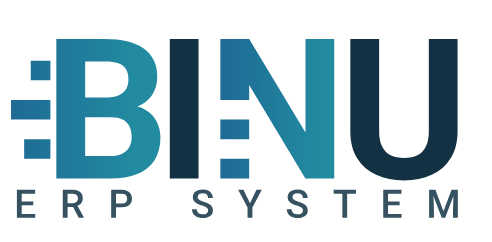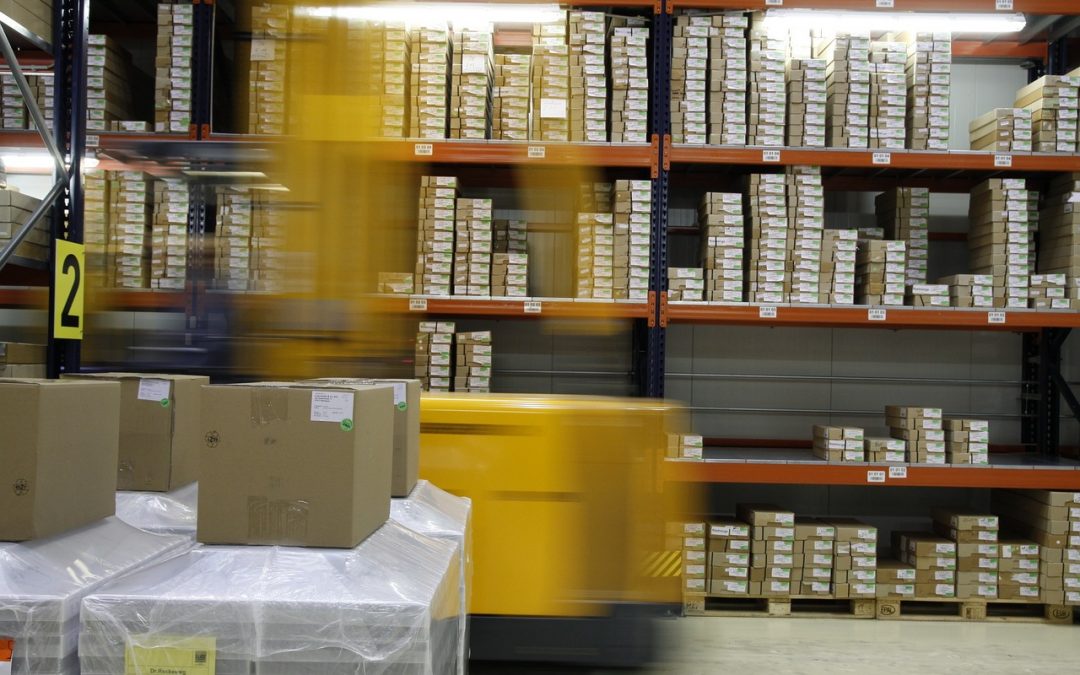Table of Contents
- Introduction to Inventory in ERP Systems for Manufacturing
- Inventory Management in Manufacturing
- ERP Inventory Software Features and Benefits
- Warehouse vs. Inventory Understanding the Differences
- Inventory ERP System for Manufacturing Overview
- Inventory Manufacturing Software Streamlining Operations
- Key Inventory System Examples for Manufacturing
- Implementing ERP Inventory Systems: Best Practices
- Binu ERP is Tailored for Manufacturers
- Conclusion of article
- FAQ of article
Introduction to Inventory in ERP Systems for Manufacturing
Inventory management plays a critical role in manufacturing, ensuring that the right materials and products are available when needed. In today’s fast moving manufacturing environment, inventory inefficiencies can lead to production delays, increased costs, and dissatisfied customers. This is where ERP inventory systems come into play, offering manufacturers the ability to optimize inventory levels, reduce waste, and enhance production processes.
In this article, we will explore how ERP inventory software integrates into manufacturing systems, the differences between warehouse vs. inventory, and how manufacturers can benefit from advanced inventory manufacturing software. We’ll also look at specific inventory system examples and the role of Binu ERP in providing a inventory solution for manufacturers.
Inventory Management in Manufacturing
Inventory management is not just about knowing what’s in stock; it’s about maintaining a balance between supply and demand. Poor inventory management can lead to stockouts, overstocking, or production halts, all of which negatively impact the bottom line. An effective inventory in a ERP system can provide real-time insights, allowing manufacturers to make data-driven decisions that optimize their production and distribution processes.
In the manufacturing world, inventory management goes beyond finished goods. It includes raw materials, components, work-in-progress items, and spare parts, all of which need to be managed efficiently to avoid production bottlenecks.
Key Benefits of ERP Inventory Systems:
- Real-time tracking of inventory levels.
- Reduction of excess stock and waste.
- Improved production scheduling and planning.
- Enhanced customer satisfaction through timely deliveries.
ERP Inventory Software Features and Benefits
ERP inventory software is a powerful tool that integrates inventory management with other business processes, such as procurement, sales, and production planning. This type of integration enables manufacturers to have a holistic view of their operations, helping them reduce costs, improve efficiency, and increase profitability.
Features of ERP Inventory Software:
- Real-time Inventory Tracking: Monitor stock levels and movements in real time, ensuring accurate inventory data.
- Automated Reordering: Set reorder points to automatically replenish stock when it reaches a certain level.
- Multi-location Management: Manage inventory across multiple locations or warehouses with ease.
- Lot and Serial Number Tracking: Track individual items or batches to ensure quality control and traceability.
- Reporting and Analytics: Generate detailed reports on inventory levels, turnover rates, and more to make informed decisions.
By using ERP inventory software, manufacturers can avoid the common pitfalls of manual inventory management, such as data entry errors, stock discrepancies, and inefficiencies in order processing.
Warehouse vs. Inventory Understanding the Differences
The terms warehouse and inventory are often used interchangeably, but they represent different concepts in manufacturing. A warehouse is a physical location where goods are stored, while inventory refers to the materials, components, and finished products within that warehouse.
Key Differences:
- Warehouse: A storage facility where inventory is housed. It includes shelves, racks, and bins for organizing products.
- Inventory: The actual goods that are stored in a warehouse, including raw materials, work-in-progress items, and finished goods.
In an ERP system, warehouse management and inventory management are often integrated, but they serve different purposes. Warehouse management focuses on the physical aspects of storage, such as optimizing space utilization and managing warehouse staff. In contrast, inventory management deals with ensuring that the right products are available at the right time and in the right quantities.
In short, inventory is the stock itself, while a warehouse is the location where that stock is kept.
Inventory ERP System for Manufacturing Overview
An inventory ERP system is designed to automate and optimize inventory-related processes in a manufacturing environment. From tracking raw materials to managing finished goods, an ERP system provides visibility and control over all aspects of inventory management.
For manufacturers, having an ERP system that can handle complex inventory requirements is crucial. These systems can be customized to meet the specific needs of different manufacturing industries, such as automotive, electronics, and other types of production.
Core Functions of an Inventory ERP System:
- Demand Analysis: Use historical data and trends to predict future inventory needs.
- Order Management: Streamline the process of fulfilling orders from the initial request.
- Production Planning: Align inventory levels with production schedules to avoid delays.
- Supplier Management: Track supplier performance and manage purchasing.
With an inventory ERP system, manufacturers can reduce the risk of stockouts, improve production efficiency, and enhance overall operational performance.
Inventory Manufacturing Software Streamlining Operations
Inventory in a manufacturing software goes beyond basic inventory management by incorporating advanced features tailored to the needs of manufacturers. These systems help manufacturers reduce costs, increase efficiency, and meet customer demands more effectively.
How Inventory Manufacturing Software Helps:
- Automates Inventory Tracking: Automatically update inventory levels as goods move through the production process.
- Integrates with Production Planning: Sync inventory data with production schedules to ensure materials are available when needed.
- Improves Supplier Collaboration: Share real-time inventory data with suppliers to improve order accuracy and delivery times.
One of the main advantages of using specialized inventory manufacturing software is that it helps manufacturers maintain optimal inventory levels, ensuring that production processes run smoothly and efficiently.
Key Inventory System Examples for Manufacturing
Different industries have unique inventory management needs, and ERP systems are designed to accommodate these variations. Here are a few inventory system examples commonly used in manufacturing:
- Just-in-Time (JIT) Inventory: Used by manufacturers to reduce inventory costs by receiving goods only when needed for production.
- Material Requirements Planning (MRP): A system that calculates the materials needed for production and ensures that the necessary components are available at the right time.
- ABC Inventory Management: A method of categorizing inventory based on its importance, with A-items being the most valuable and C-items being the least valuable.
These inventory system examples illustrate how manufacturers can tailor their inventory management strategies to meet specific production goals and challenges.
Implementing ERP Inventory Systems Best Practice
When implementing an ERP inventory system, manufacturers must follow best practices to ensure success. This includes thorough planning, training, and continuous monitoring.
Best Practices for ERP Implementation:
- Define Clear Objectives: Identify what you want to achieve with the ERP system, such as reducing stockout’s or improving order fulfillment times.
- Involve Key Stakeholders: Engage employees from different departments, such as production, procurement, and sales, to ensure the system meets their needs.
- Train Employees: Provide comprehensive training to all users to ensure they can effectively use the ERP system.
- Monitor Performance: Continuously monitor the system’s performance and make adjustments as needed to improve efficiency.
By following these best practices, manufacturers can ensure a smooth implementation and maximize the benefits of their inventory with an ERP system.
Binu ERP is Tailored for Manufacturers
Binu ERP System is a powerful ERP solution designed specifically for manufacturers. With a focus on optimizing inventory management, Binu ERP offers features that help manufacturers streamline their operations, reduce costs, and improve overall efficiency.
Key Features of Binu ERP:
- Real-time Inventory Tracking: Monitor inventory levels in real-time to prevent stockouts and overstocking.
- Automated Reordering: Set up automatic reordering to ensure you never run out of critical materials.
- Production Planning Integration: Align inventory with production schedules to ensure materials are always available when needed.
Visit Binu ERP for more information on read how our warehouse module can benefit your manufacturing business. Our warehouse module include different inventory features.
Read more about the ERP System and all modules or try our free demo.
Conclusion of article
In the manufacturing industry, efficient inventory management is essential for maintaining smooth production processes and meeting customer demands. By implementing an inventory ERP system, manufacturers can gain real-time insights, automate key processes, and reduce costs. Whether you’re comparing warehouse vs. inventory, exploring inventory system examples, or looking to implement advanced inventory manufacturing software, an ERP system is a important tool for pushing towards success.
FAQ of article
- What is the difference between warehouse and inventory in manufacturing?
A warehouse is the physical space where goods are stored, while inventory refers to the materials and products stored within the warehouse. - What are the benefits of using ERP inventory software?
ERP inventory software provides real-time tracking, automates reordering, and integrates inventory data with other business processes, improving efficiency and reducing costs. - How does an ERP inventory system help in manufacturing?
An ERP inventory system ensures that materials are available when needed, aligns inventory levels with production schedules, and provides real-time visibility into stock levels. - What are some examples of inventory systems used in manufacturing?
Common inventory systems include Just-in-Time (JIT) inventory, Material Requirements Planning (MRP), and ABC Inventory Management. - How can Binu ERP improve inventory management in manufacturing?
Binu ERP offers real-time inventory tracking.

